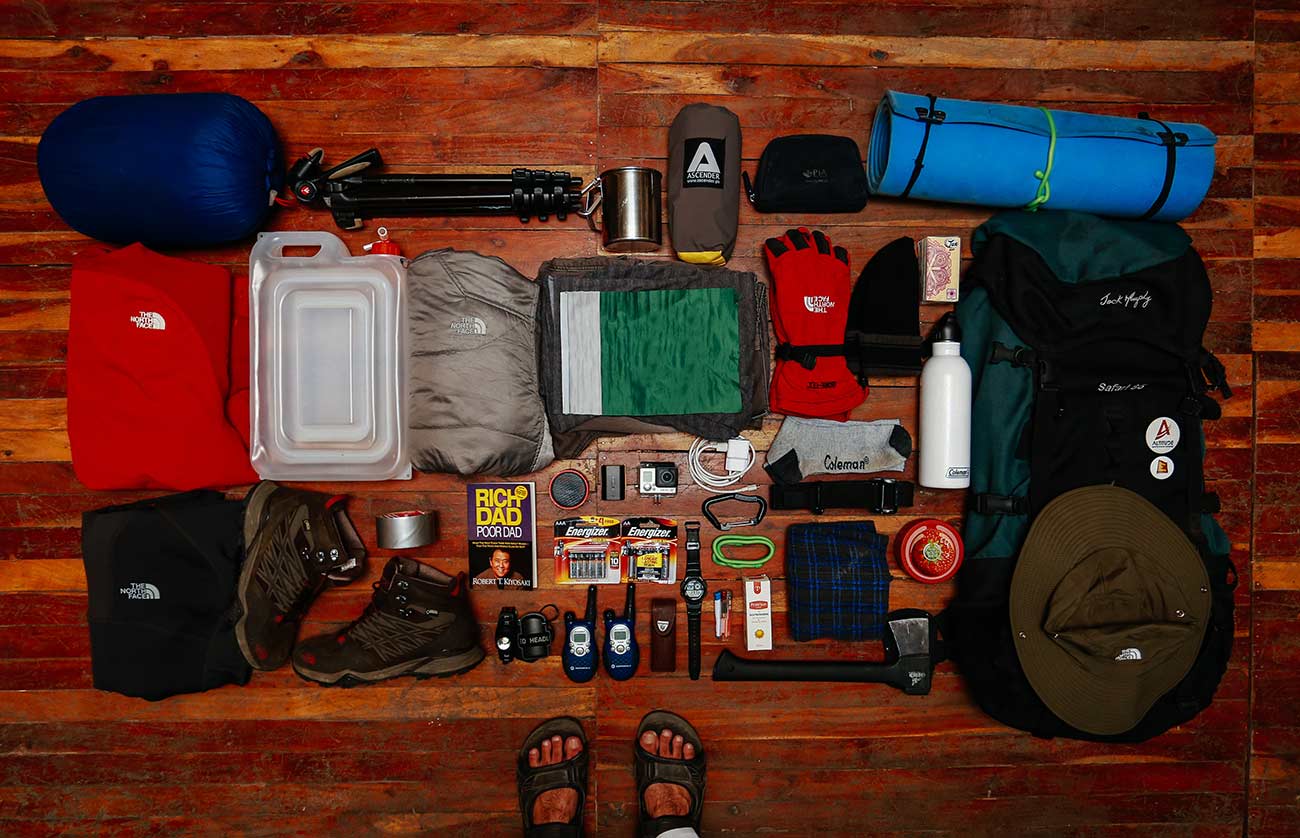Climbing Mount Kilimanjaro, the tallest free-standing mountain in the world, is a thrilling adventure that requires careful planning and the right gear. To help you prepare for your trek to the “Roof of Africa,” we’ve put together a comprehensive packing list to ensure your safety and comfort during this challenging journey.
Mount Kilimanjaro Climbing Packing List
Mount Kilimanjaro Climbing Packing List

What to Bring on Your Adventure
Clothing:
1. Moisture-Wicking Base Layers: Pack moisture-wicking tops and bottoms to keep sweat away from your skin and regulate your body temperature.
2. Insulating Layers: Bring thermal or fleece layers to keep warm in the cold high-altitude environment.
3. Waterproof and Windproof Jacket: A quality waterproof and windproof jacket is essential to protect against rain, snow, and strong winds.
4. Trekking Pants: Lightweight, breathable, and moisture-resistant pants are a good choice for comfort during the hike.
5. Gaiters: These protect your lower legs and boots from dirt, rocks, and snow, especially on the dusty trails.
6. Hiking Socks: Wool or moisture-wicking socks are crucial to prevent blisters and keep your feet dry.
7. Hiking Boots: Choose sturdy, waterproof, and well-broken-in boots with good ankle support.
8. Headgear: A warm beanie and a wide-brimmed hat to protect from both cold and sun.
Gear and Equipment:
9. Daypack: A small, comfortable daypack to carry essentials like water, snacks, and extra layers.
10. Duffel Bag: For porters to carry your main gear, make sure it’s durable and waterproof.
11. Sleeping Bag: A high-quality, cold-weather sleeping bag suitable for Kilimanjaro’s climate.
12. Trekking Poles: They provide stability and reduce strain on your knees during the descent.
13. Headlamp/Flashlight: A reliable light source for early morning summit attempts and late-night camp activities.
14. Water Bottles/Hydration System: Carry at least two liters of water in reusable bottles or a hydration bladder.
15. Sunglasses: High-UV protection sunglasses with side shields are crucial to protect your eyes from the strong sun.
Health and First Aid:
16. Prescription Medications: If you have prescription medications, ensure you bring an adequate supply.
17. High-Altitude Medications: Consult a doctor for altitude sickness medication if needed.
18. First Aid Kit: Include essentials like bandages, pain relievers, antiseptic wipes, and blister treatment.
19. Toiletries: Travel-sized items for hygiene, including toilet paper and wet wipes.
Miscellaneous:
20. Passport and Travel Documents: Ensure your passport, visa, and other necessary documents are up-to-date and securely stored.
21. Cash: Carry some cash for tips, souvenirs, and unforeseen expenses.
22. Camera: Don’t forget your camera to capture the breathtaking landscapes.
23. Chargers and Adapters: Keep your electronics powered up with the right chargers and adapters.
Note:
- Travel Insurance: Consider travel insurance that covers high-altitude trekking, including evacuation in case of emergencies.
- Guided Tours: If you’re joining a guided tour, consult your tour operator for specific gear requirements and to see if some items are provided.
- Porter Welfare: Remember to pack reasonably, as porters have weight restrictions. Respect their hard work and contribute to responsible tourism.
Climbing Mount Kilimanjaro is a challenging and rewarding experience. With the right gear and preparation, you can comfortably and safely explore this iconic African peak. Always check the latest gear recommendations and requirements with your tour operator and be ready for changing weather conditions as you ascend to the summit.
RELATED IMAGES
Quaerat inventore! Vestibulum aenean volutpat gravida. Sagittis, euismod perferendis.


